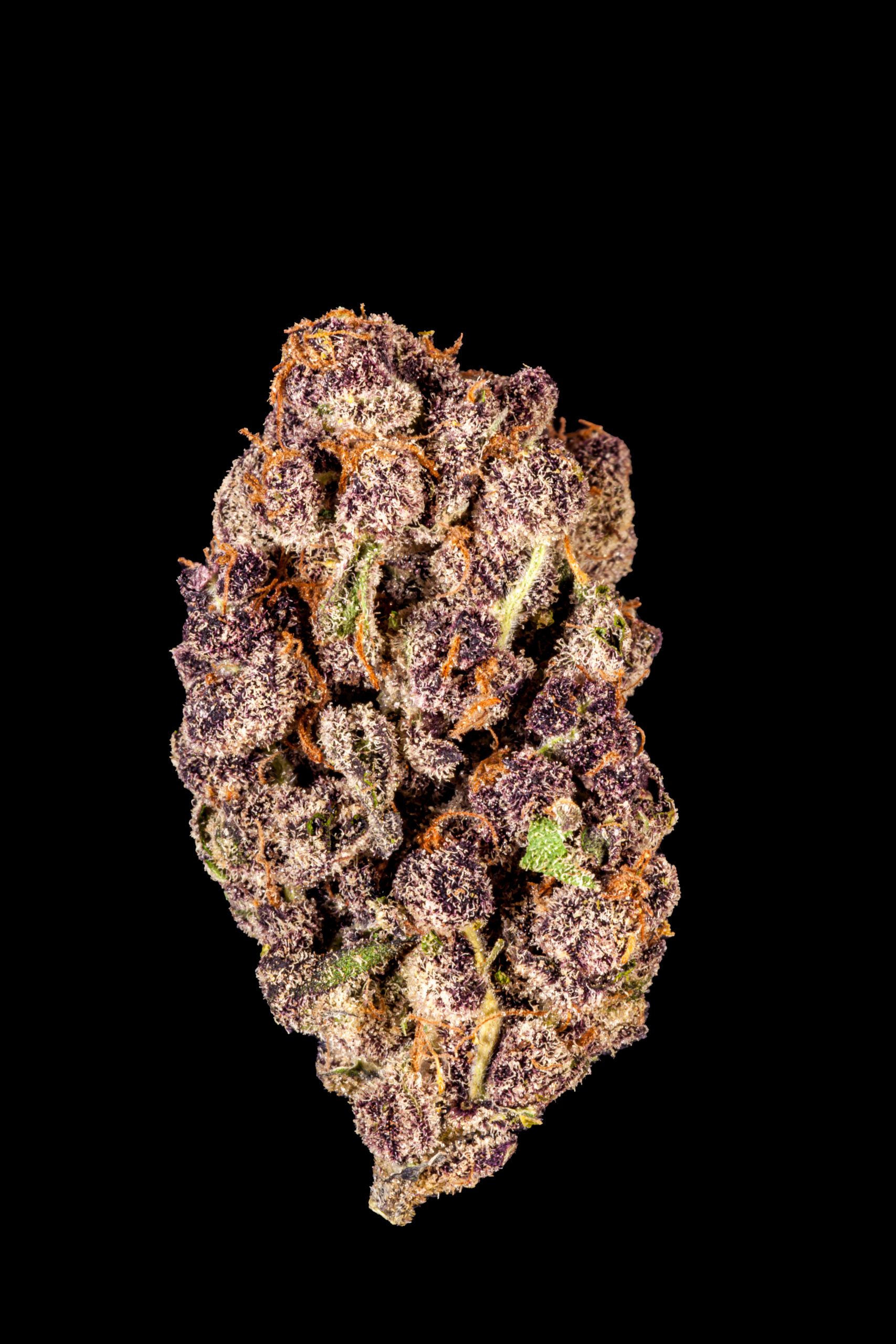As the legalization of cannabis continues to expand in Thailand and worldwide, more people are looking to try it out for the first time or are seeking out higher quality products. But how can you tell if you’re getting good quality cannabis? In this article, we’ll cover the key factors to consider when checking the quality of cannabis.
Appearance
The appearance of cannabis can provide important clues about its quality and potency. A high-quality cannabis plant should have a healthy, vibrant appearance, with dense buds that are covered in trichomes.
Trichomes are the small, mushroom-shaped structures that are found on the surface of the cannabis plant. These structures are responsible for producing the cannabinoids and terpenes that give the plant its unique effects and flavors. A high-quality cannabis plant will have an abundance of trichomes, which will appear as small, sparkling crystals on the surface of the buds.
The color of the buds can also provide important information about their quality. Generally, high-quality buds will have a vibrant green color, with orange or red hairs (known as pistils) that are interspersed throughout. The pistils play an important role in reproduction, but they can also indicate the maturity of the plant. If the pistils are brown or wilted, it may indicate that the plant was harvested too late, which can result in a decrease in potency and flavor.
The density of the buds is another important factor to consider when evaluating the appearance of cannabis. High-quality buds will be dense and tightly packed, which indicates that they are rich in cannabinoids and terpenes. Buds that are loosely packed or airy may be of lower quality, as they may contain fewer trichomes and lower levels of cannabinoids.

Smell
The smell of cannabis is often one of the first things people notice when they encounter the plant. A high-quality cannabis plant should have a strong, pungent aroma that is pleasant to the nose. The smell should be indicative of the plant’s strain and should be a good representation of its flavor and effects.
One of the primary reasons that the smell of cannabis is so important is that it can indicate the presence of certain compounds within the plant. Terpenes are one such compound that can greatly affect the smell of cannabis. These organic compounds are produced by the same glands that produce cannabinoids and are responsible for the unique aroma and flavor of each strain.
Different terpenes can produce different smells, and some are more desirable than others. For example, limonene is a terpene that is found in citrus fruits and is often used in aromatherapy. It has a fresh, citrusy scent and is known to have anti-inflammatory and anti-anxiety properties. On the other hand, myrcene is a terpene that is found in hops and has a musky, earthy scent. It is known for its sedative properties and is often associated with the “couch-lock” effect of certain strains.
The presence of certain terpenes can also indicate the quality of the cannabis plant. For example, strains that have a high concentration of the terpene beta-caryophyllene are often considered to be of higher quality, as this terpene has been shown to have anti-inflammatory and pain-relieving properties.
Flavor
Flavor is an important aspect to consider when evaluating the quality of cannabis. A high-quality cannabis plant should have a flavor that is indicative of its strain and effects. The flavor should be pleasant, and it should not taste harsh or unpleasant when consumed.
The flavor of cannabis is largely determined by the presence of terpenes, which are organic compounds that are responsible for the plant’s unique aroma and taste. Different terpenes can produce different flavors, and some are more desirable than others.
For example, the terpene limonene is often associated with a citrusy flavor, while the terpene myrcene is associated with an earthy or musky flavor. Pinene, another common terpene, is associated with a pine-like flavor. Terpenes can also work together to create more complex and nuanced flavors.
The flavor of cannabis can also be affected by factors such as the plant’s growing conditions, harvesting method, and curing process. Plants that have been grown under optimal conditions, harvested at the right time, and cured properly will often have a more pronounced and enjoyable flavor than plants that have been poorly cared for.
The flavor of cannabis can provide valuable information about the plant’s potential effects and therapeutic properties. For example, strains that have a sweet or fruity flavor are often associated with uplifting and energizing effects, while strains with a more earthy or musky flavor are often associated with relaxing and sedative effects.
Trichomes
Trichomes are small, hair-like structures that appear on the surface of the cannabis plant. They are responsible for producing and storing cannabinoids and terpenes, which are the compounds that give cannabis its unique properties and effects.
Trichomes are important because they contain the highest concentration of cannabinoids and terpenes in the plant. The more trichomes a cannabis plant has, the more potent and flavorful it is likely to be. Trichomes are also an indicator of the plant’s overall health and maturity.
When evaluating the quality of cannabis, it is important to look at the trichomes under a magnifying glass or microscope. The trichomes should be clear and translucent when the plant is young and immature. As the plant matures, the trichomes will begin to turn opaque and cloudy. When the trichomes are mostly cloudy and some are starting to turn amber or brown, it is a good time to harvest the plant.
The color and appearance of the trichomes can also provide valuable information about the potential effects of the cannabis plant. Trichomes that are mostly clear are often associated with a more energetic and uplifting effect, while trichomes that are mostly cloudy and some are turning amber or brown are often associated with a more relaxing and sedative effect.
It is also worth noting that the size and density of the trichomes can affect the plant’s overall potency and quality. Plants that have larger and denser trichomes are often more potent and flavorful than those with smaller and less dense trichomes.
Cannabinoid Content
Cannabinoids are chemical compounds found in the cannabis plant that interact with the body’s endocannabinoid system to produce a wide range of effects. There are over 100 different cannabinoids found in cannabis, with the two most well-known being THC (tetrahydrocannabinol) and CBD (cannabidiol).
When evaluating the quality of cannabis, it is important to consider the cannabinoid content. The concentration and ratio of different cannabinoids can affect the plant’s potency, flavor, and potential effects.
THC is the primary psychoactive cannabinoid in cannabis, and is responsible for the “high” associated with cannabis use. The potency of cannabis is often measured by the percentage of THC it contains. Higher THC content typically results in a more potent and psychoactive experience.
CBD, on the other hand, is a non-psychoactive cannabinoid that has gained popularity in recent years for its potential therapeutic benefits. CBD can provide a range of effects, from promoting relaxation and reducing anxiety, to providing relief from pain and inflammation.
Other cannabinoids found in cannabis, such as CBG (cannabigerol) and CBN (cannabinol), may also provide unique effects and benefits.
When evaluating the quality of cannabis, it is important to look at the cannabinoid profile to understand the potential effects and benefits of the plant. This information can often be found on product labels or through lab testing.
In addition, the ratio of different cannabinoids can affect the plant’s overall quality. For example, some strains of cannabis are known for their high THC content, while others may have a more balanced THC to CBD ratio. The ratio of cannabinoids can affect the plant’s flavor, aroma, and potential effects.
Testing
Testing is a crucial aspect of evaluating the quality of cannabis. Testing allows for the quantification of various compounds found in the plant, including cannabinoids, terpenes, and contaminants.
Cannabinoid testing is particularly important for understanding the potency and effects of a particular strain or product. This testing allows for the quantification of cannabinoids such as THC and CBD, as well as other lesser-known cannabinoids like CBG and CBN.
Terpene testing is also becoming more common in the cannabis industry. Terpenes are the aromatic compounds that give cannabis its unique smell and flavor. These compounds can also contribute to the effects of the plant. Terpene testing allows for the quantification of different terpenes present in a strain or product, providing a better understanding of its flavor and potential effects.
Contaminant testing is also essential for ensuring the safety of cannabis products. Contaminants such as pesticides, heavy metals, and residual solvents can be harmful to consumers. Testing allows for the detection of these contaminants and helps to ensure that products are safe for consumption.
In many legal cannabis markets, testing is required by law. Products must be tested by accredited laboratories to ensure that they meet certain safety and quality standards. These standards often include limits on the levels of contaminants that are allowed, as well as minimum potency requirements.
Consumers should be wary of purchasing cannabis products that have not been tested. Without testing, there is no way to know the potency, purity, or safety of a particular product.
Conclusion
In conclusion, evaluating the quality of cannabis requires a comprehensive understanding of various factors, including smell, flavor, trichomes, cannabinoid content, testing, and appearance. While there are many factors that can impact the overall quality of cannabis, paying attention to these key indicators can help consumers identify high-quality products.
When selecting cannabis, it’s important to use your senses and pay attention to the details. Smell the product to get an idea of its aroma and flavor, and examine the buds for their color, density, and moisture content. Additionally, consider the cannabinoid content and test results to ensure that you are getting a product that meets your specific needs.
Ultimately, the quality of cannabis can vary significantly depending on a variety of factors, and consumers should take the time to research and understand these factors in order to make informed purchasing decisions. By using these key indicators to evaluate cannabis, consumers can ensure that they are getting a high-quality product that delivers the desired effects and flavors.
